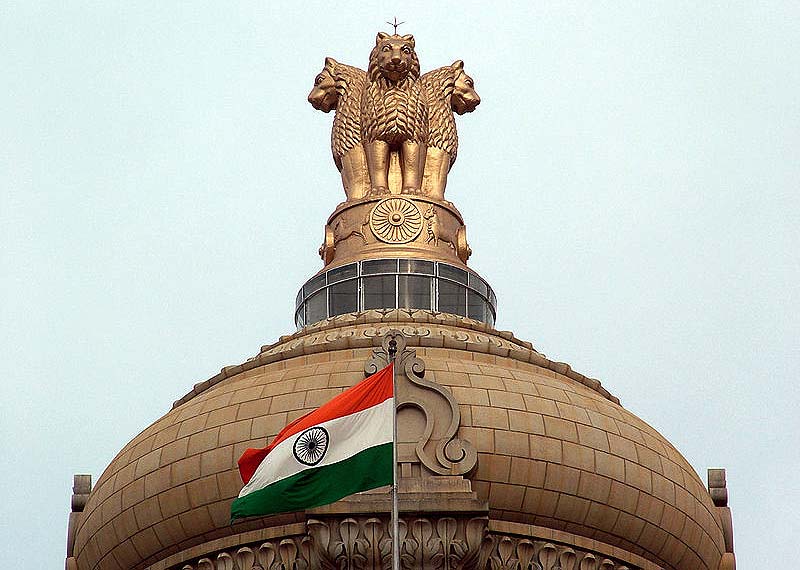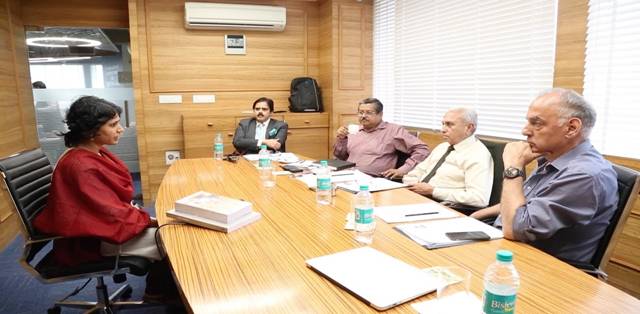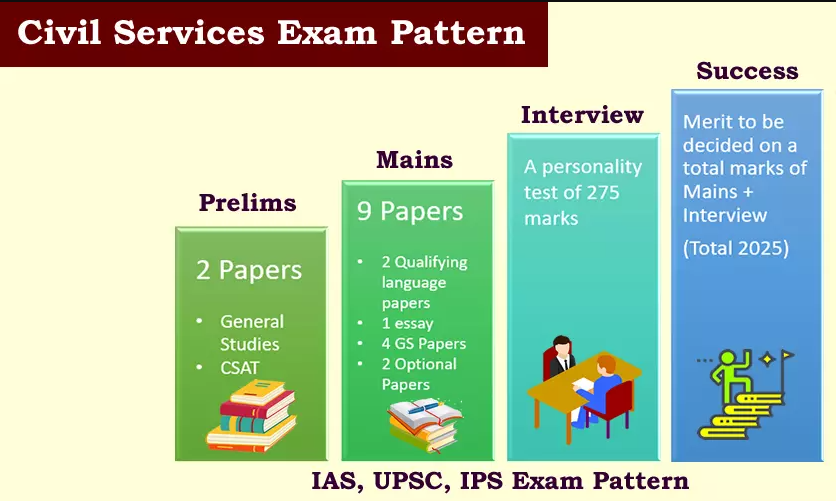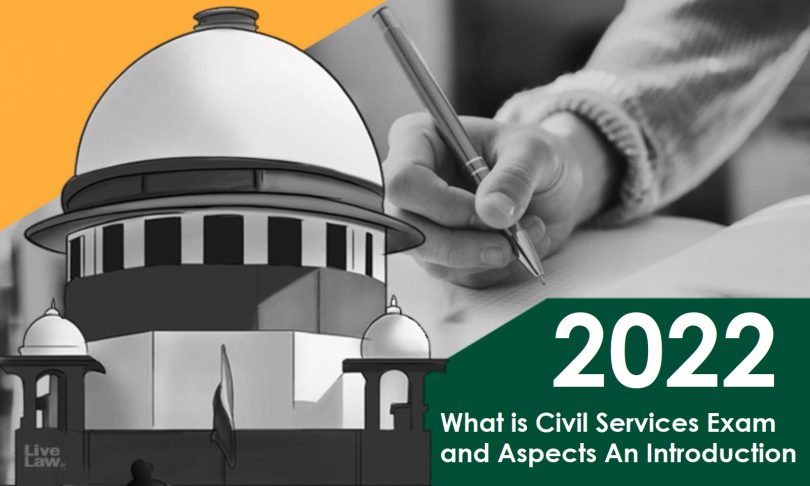Civil Services Examination: An Introduction

Civil Services The Union Public Service Commission (UPSC), which is a constitutional body of India, is responsible for all India services such as the Indian Administrative Service (IAS) and the Indian Police Service (IPS), and the Indian Foreign Service (IFS), the Indian Revenue Service (IRS), Indian Railways conducts Civil Services Examination every year to select candidates for prestigious services like Transport Service (IRTS) and Indian Company Law Service (ICLS) etc. Every year lakhs of candidates appear in this exam to try their luck. However, only a few candidates among them get the privilege of reaching these prestigious posts, which are known as the “Architect of the Nation”. The ‘Civil Services Examination’ is mainly conducted in three phases (Preliminary, Main and Interview), whose general introduction is as follows – An introduction.
Preliminary Examination:
- The first stage of Civil Services Examination is called Preliminary Examination. It is purely objective (multiple choice) in nature, in which one has to choose the correct option out of the four possible options (a, b, c and d) given for each question.
- Your selected option related to the question has to be filled with black ball point pen at the appropriate place in the respective circle given against the question in the OMR seat given by the Commission.
- The Civil Services Preliminary Exam is of 200 marks.
- Presently the Preliminary Examination consists of two papers. The first paper is of ‘General Studies’ (100 questions, 200 marks) while the second one is of ‘Civil Services Aptitude Test’ or ‘CSAT’ (80 questions, 200 marks) and will be of qualifying paper. is in the form. It is necessary to obtain 33% marks in CSAT question paper.
- The system of ‘negative marking’ is applicable in both the papers, under which 3 wrong answers will be deducted equal to 1 correct answer
- The cut-off in the Preliminary Examination is decided on the basis of only the first paper i.e. General Studies.
Main Exam:
- The second stage of the Civil Services Examination is called ‘Main Examination’.\
- The objective of the Preliminary Examination is only to select some serious and deserving candidates from amongst all the candidates and the actual examination shall be conducted among those selected candidates.
- The main examination is of total 1750 marks in which 1000 marks are allotted for general studies (4 papers of 250-250 marks), 500 marks for an optional subject (2 papers of 250-250 marks) and 250 marks for essay.
- In the main examination, 300-300 marks are prescribed for both the papers of ‘qualifying’ nature (English and Hindi or any language included in the 8th Schedule of the Constitution), in which the minimum qualifying marks have been fixed at 25% (75 marks). The marks of these papers are not counted for determining the merit.
- The papers of the main examination are published simultaneously in both English and Hindi languages, although candidates have the freedom to answer in any of the 22 languages included in the Eighth Schedule to the Constitution (except in the subjects of literature only). The candidate should write the answers in the script of the same language, even if his medium is not that language).
- It is worth noting that while the Preliminary Examination is completely objective, the Main Examination consists of Descriptive or Subjective questions with different word limits. In these questions, the answer is not to be chosen from different options, but to be written in your own words. This is the reason that a good writing style is considered very important to be successful in the main examination.
Interview:

- The final and important stage of the Civil Services Examination is called Interview.
- The candidates selected in the main examination usually have to appear for the interview before the commission in the month of February-March-April.
- In this, neither option is given for the correct answer like in the preliminary examination nor there is a facility to select the questions at your convenience like some papers of the main examination. It is mandatory to answer each question and you can also be asked counter questions for every answer. Every wrong or light answer causes a loss like ‘negative marking’ and the more difficult thing is that unlike the first two stages of the exam, there is no fixed syllabus for it. Any question that can be thought of in the world is part of its curriculum. Actually, this exam is such in its nature that it is natural for the candidate to be restless.
- A total of 275 marks have been earmarked for the interview in the Civil Services Examination conducted by UPSC. The marks fixed for this stage are definitely less as compared to the main exam marks (1750 marks) but these marks have a special contribution in the final selection and post determination.
- During the interview, the personality of the candidates is tested, in which oral questions are asked by the members of the interview board at the designated place in the commission, to which the candidate has to answer orally. This process usually lasts for 40-50 days depending on the number of candidates.
- Merit list is finally prepared on the basis of the aggregate of marks obtained in main examination and interview.
- Usually a week after the end of the interview of all the selected candidates for this stage, the list of finally selected candidates is released.

I hope you like the Article of the What is Civil Services Exam and Aspects An Introduction in 2022. If you like then share to others.



